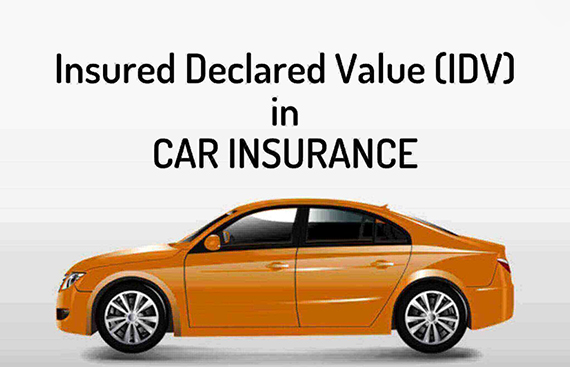The Importance Of IDV Calculation In Insurance: What You Need To Understand

Vehicle insurance isn’t just a formal requirement—it’s an investment in the safety and longevity of one’s vehicle. Comprehensive insurance serves as a crucial protective measure for both cars and motorcycles. It provides a safety net against a wide range of potential risks and uncertainties.
Among the various components that define how this insurance works, the Insured Declared Value (IDV) is arguably the most significant. Understanding IDV’s calculation is essential for every policyholder to ensure they are ade- quately covered and pay a fair premium.
So, let us get started.
What is the Insured Declared Value (IDV)?
IDV refers to the maximum sum assured fixed by the insurer which is provided in case of theft or total loss of the vehicle. Essentially, it represents the current market value of the vehicle. When you opt for comprehensive insurance, IDV is the amount you are insured for, which can be claimed if your vehicle is damaged beyond repair or stolen.
Why is Accurate IDV Calculation Important?
The accurate calculation of IDV plays a pivotal role in motor insurance. It directly influences your premium costs and the sum assured. For a new vehicle, the IDV is calculated based on the manufacturer's listed selling price and then adjusted for depreciation.
As the vehicle ages, the depreciation factor increases, reducing the IDV. This adjustment follows the guidelines laid down by the Indian Motor Tariff.
Hence, ensuring the IDV is closest to your vehicle’s actual market value is beneficial. It prevents overpayment in premiums and also guarantees that in the event of a claim, the compensation received is neither deficient nor excessively high.
IDV and Its Impact on Premiums
Comprehensive insurance premiums are calculated based on several factors, of which IDV is the primary one. Higher IDV leads to higher premiums and vice versa. However, it's crucial not to understate your vehicle's IDV to decrease the premium. This might seem like a cost-saving hack but it can significantly impact financial relief when you need it the most, like after an accident or theft.
When Should You Re-evaluate Your Vehicle’s IDV?
The perfect time to re-evaluate your vehicle's IDV is during the four or two wheeler insurance renewal process. This period allows you to assess any changes in the market value of your vehicle that could affect your IDV.
For instance, if your bike has undergone significant modifications or there have been fluctuations in the market prices for vehicles of your model and make, these factors should be reflected in the recalculated IDV.
The Process of Calculating IDV
IDV is calculated based on the manufacturer's listed selling price of the vehicle, minus depreciation as per its age and condition. Typically, insurers use a predefined depreciation schedule to determine the depreciated value of the vehicle.
To calculate IDV, insurers consider the original price of the vehicle and apply depreciation based on its age. Here’s a typical depreciation schedule used:
- 1st year: 5%
- 2nd year: 10%
- 3rd year: 15%
- 4th year: 25%
- 5th year: 35%
- 6th year: 45%
- Beyond 6 years: 50%
This method ensures that the vehicle’s insured value is aligned with its current economic worth, thus balancing the risk for both the insurer and the insured.
How to Make the Most of Your Comprehensive Insurance?
To make the most of your comprehensive insurance, consider the following points:
- Understand your policy: Take the time to thoroughly read and comprehend your insurance policy, including coverage limits, exclusions, deductibles, and any specific details about the Insured Declared Value (IDV), which determines the maximum payout in case of theft or total loss.
- Review your Coverage: Periodically reassess your insurance needs to ensure your coverage aligns with your current circumstances and any changes in your assets or liabilities. Also, do not forget to review your vehicle's IDV periodically to ensure it accurately reflects its current market value.
- Bundle Policies: Consider bundling multiple insurance policies with the same provider to potentially qualify for discounts or savings on premiums.
- Practice Preventive Measures: Minimize the risk of potential claims by implementing preventive measures, such as installing security systems, maintaining your property, or practising safe driving habits.
Conclusion
Understanding the concept of IDV and ensuring it is appropriately set within your comprehensive insurance policy is not just about adhering to legal requirements but about making a wise financial decision. As your vehicle ages or your circumstances change, revisiting and revising the IDV is important to keep your vehicle insurance relevant and effective.
For those looking for four or two wheeler insurance renewal, look no further than ACKO. Our customer-centric approach stands out, providing quick and efficient claim settlements, and ensuring a superior experience.
Disclaimer: Vehicle insurance is a mandatory requirement as per The Motor Vehicles Act, 1988. Non-compliance can lead to monetary penalties and legal issues. Thus, make sure to buy vehicle insurance and keep the policy active by renewing it before its expiry date. You can buy/renew vehicle insurance easily, quickly, and conveniently via the ACKO website/app for a hassle-free insurance experience.
